Taman Ujung Water Palace is an extravagant former king’s palace in Karangasem, East Bali. It was built by the same king who was behind Tirta Gangga Water Palace and is known for its large ponds, impeccably manicured gardens, beautiful bridges and historic “floating” pavilions, all of which show an impressive blend of Balinese, Chinese, and Dutch influences. The Taman Ujung Water Palace complex is the largest temple or palace site we visited in Bali, it receives significantly fewer visitors than Tirta Gangga, and you can enjoy peaceful moments wandering around the beautifully manicured paths that crisscross the water palace grounds. To help you plan your visit and get the most out of your time here, we put together this travel guide for visiting Bali’s Taman Ujung Water Palace.
Disclosure: This page (Bali’s Taman Ujung Water Palace – A Temple Visiting Guide) may contain product affiliate links. At no additional cost to you, we may receive a commission for purchases made through these links. More details can be found on our disclosure and policies page.
Planning a Trip to Bali?
You might be interested in these pages:
Best Things to See and Do in Ubud
Best Things to See and Do in Gili T
The Perfect Three-Week Bali Itinerary
Best Things to See and Do in East Bali
We also highly recommend these travel guidebooks:
Lonely Planet Bali, Lombok & Nusa Tenggara
Bali: The Solo Girl’s Travel Guide
Rough Guides: Bali and Lombok





Taman Ujung Water Palace: Location & Map
Taman Ujung Water Palace is located in eastern Bali’s Karangasem Regency (link to Google Maps). There is a small car park right next to the temple.

How to get to Taman Ujung Water Palace
Drive times can be highly variable depending on the traffic conditions.
Distance from Ubud: 60 km // Average Drive Time: 1h45 – 2h15
Distance from Kuta: 75 km // Average Drive Time: 2h – 2h30
Distance from Canggu: 75 km // Average Drive Time: 2h15-2h45
Distance from Sanur: 65 km // Average Drive Time: 1h45 – 2h15
Distance from Sidemen: 25 km // Average Drive Time 50 – 60 minutes
In our opinion, the three best transport options to reach Taman Ujung Water Palace are: renting a scooter (moped), joining a group tour that hits several nearby attractions within a day or a half-day, or hiring a car and driver (which really isn’t as expensive as it sounds).
You can also use Bali ride-hailing apps such as Gojek or Grab, and make use of local taxis, but these options will typically cost more, especially if you plan on visiting several sites and attractions on the same day. Also, Gojek or Grab are not authorized to pick up people in certain locations where local taxi unions limit their services, including Canggu, Sanur, and Ubud. For more information on getting around the island and the different available options, check out our guide on How to Best Get Around Bali.
We highly recommend Airalo (eSIM card) for your connectivity needs when travelling abroad. Airalo is the world’s first and largest eSIM store with eSIM plans for 200+ countries and regions worldwide.
Getting to Taman Ujung by Scooter: Once you get to Bali, you’ll quickly realize that scooter rental operators are everywhere. Although most street-side vendors will regularly be the cheapest option, they come short in several other aspects compared with more reliable and established vendors. For instance, most won’t offer roadside assistance or insurance that covers theft, nor do they regularly sanitize the helmets or have their scooters undergo regular maintenance. For this reason, we highly recommend using Bikago for your scooter rentals. Renting from them might be slightly more expensive (but still can be rented for as low as 12-15 US$/€ per day) but you get great peace of mind as among many other perks, all scooters undergo extensive quality checks.
What you get with your Bikago rental:
-Helmets
-Full tank of petrol and unlimited mileage
-Free Delivery and Collection at your Hotel
-24/7 Roadside Assistance and First Aid Medical Kit
-Charging Mobile Phone Holder
By Car and Driver hire: Hiring a car and driver to explore Bali can be a practical and cost-efficient way to experience a full day of sightseeing. Although this option is more expensive than renting a scooter (typically 40-60 US$/€ per day), you don’t have to worry about navigating the Bali roads and traffic. Also, most cars are modern and air-conditioned, which is welcome in Bali’s humid heat, and the local drivers always know the best routes to take and can optimize your ideal itinerary. Here are some of the best options to choose from:
By Group Tour: Group tours can be a great option to lower costs and reduce the hassle of having to plan an efficient itinerary. Their main downside is they might not exactly be tailored to your specific interests and preferences. But if you are mostly interested in hitting the main sights and attractions, there are these great tour options that can pick you up in multiple towns and visit places including Taman Ujung Water Palace:
Taman Ujung Water Palace – Ticket Price and Operating Hours
Palace Entrance Fee
The Taman Ujung Water Palace entrance fee for foreigners is 100,000 IDR per person (2025), which roughly amounts to 6 US$/€ (which is nearly double the cost of most other temples we visited). This fee helps maintain the temple and its surrounding grounds.
Modest additional costs are required for parking: 5,000 IDR for scooters and 10,000 IDR for cars.
Having the exact change or small bills to pay for all costs is preferable as many temple sites don’t accept credit cards and they may not have enough change for large bills. To our knowledge, there are no nearby ATMs (though there are several in the nearby town of Amlapura).
Palace Opening Hours
Taman Ujung Water Palace is open daily from 7 am to 7 pm.
Palace Facilities
Toilets are available on-site.
Palace Dress Code
Since Taman Ujung is not an actual temple but rather a formal royal palace, wearing a sarong is not required. However, modest clothing that covers the shoulders and knees is recommended.
About Taman Ujung Water Palace and Its History
Taman Ujung was built between 1909 and 1921 by the ruler at the time, Agung Anglurah Ketut Karangasem (who also built nearby Tirta Gangga). Taman Ujung means “Garden at the End” or “Garden at the Edge”, depicting how the palace is located at the eastern edge of the island, near the Bali Sea. The water palace was built around an existing kolam Dirah (Dirah pool), which was built by the previous king and was used as a purification pool for those who were suspected of practising black magic.
We mentioned above the interesting mixture of Balinese, Chinese and Dutch influence on the palace design and layout – this is because the two main architects hired to work on the construction of the palace were Dutch (Bali was a Dutch colony at the time) and Chinese, who both worked with several local Balinese architects on the construction project.
Much like the nearby Tirta Gangga, the Taman Ujung water palace was almost entirely destroyed following the eruption of Mount Agung in 1963, and again after subsequent powerful earthquakes in 1976 and 1978. After decades of neglect, the ruins were finally restored after an impressive 3-year restoration project was completed in 2001. Although most of the original complex now has new life, the northern end of the original palace ground is still in partial ruin with sections overtaken by jungle. You can visit these sections via a scenic walking path that also runs next to rice fields.
Taman Ujung Water Palace – What to Expect
Taman Ujung Water Palace is the largest temple or complex we visited in Bali – so you can expect to cover more ground walking here when compared to other Balinese temples and palaces.
From the car park, you will first cross over a large stone bridge that passes by a small rice field.



As you exit the bridge, you quickly be impressed by the large rectangular ponds, each with its own pavilion that appears to be floating over the water.
At the centre of the northern pond is Gili Bale (meaning Island Pavillon), a white building connected on either side by elegant bridges with beautiful arches and detailed stone carvings. Bale Gili is a great example of the international fusion of architectural styles, as it is a closed building (Balinese pavilions are normally open) and takes on the distinct Dutch colonial white façade, blended with Bali’s intricate carvings and crown ornaments found on the bridge archways and the roof of the building. The use of concrete and European-colored glass are other examples of the Western influence on the palace’s architecture and design





Gili Bale served as the residence of the King, and today the rooms inside are filled with detailed carvings, paintings, various relics and photos of the Royal Family./sp
The building in the southern pond is Bale Kambang (meaning Floating Pavilion), which has a more traditional open Balinese design and is likely where the king would receive guests.






The gardens that surrounded the ponds are particularly pleasant and peaceful to walk through. You’ll cross several elegant fountains and statues, and likely notice that the gardens have a definite European feel and elegance as well. The overall layout of the pools, gardens, and pathways also displays a sense of order and symmetry, which is characteristic of European design principles.



On the other side of the ponds (relative to the park entrance), the western end of the palace grounds, there’s a hill with a large staircase that takes you to the top of the hill. The staircase specifically leads to Bale Kapal (meaning ship pavilion), named so because the partially ruined structure once resembled a ship’s hull.


The main reason to climb the staircase however is to get the superb aerial views of the palace, of the Bali sea to the east, and of Mount Lempuyang to the northeast.



If you head back down to the pond level, there’s another shorter staircase further north that leads to a gazebo-like pavilion, which offers a different perspective of the water palace and its gardens.
Finally, beyond the northern pond, you’ll find a path that seems to lead into the bush. In fact, it will take you along a trail that runs between rice fields and an unrestored section of the palace. It’s an interesting area to discover and you’ll suddenly feel completely lost in nature. You’ll eventually reach an old moss-covered pool, from which you can either return the same way you came or you can follow a path that loops around the rice fields and takes you back to the car park.










Why You Should Visit Taman Ujung Water Palace
– An Incredibly Scenic Palace: The expansive gardens are very pleasant to wander through.
– The Beautiful Aerial Views: After a short climb up the main staircase, you will be rewarded with stunning views of the palace of the sea beyond it.
– Cultural Significance: Although only for a short period, Taman Ujung Water Palace was a former royal palace.
– Fewer Crowds: Unlike many other tourist attractions across Bali, you likely won’t feel that Taman Ujung gets overcrowded. This is partly because it does get fewer visitors, but mostly because of the sheer size of the complex, which spreads out visitors across a larger area.
Why You Might Not Want To Visit
– Expensive: Although not that expensive in absolute terms for most foreigners, this temple is significantly more expensive than most temple complexes we visited in Bali.
How Long Do You Need at Taman Ujung Water Palace
Taman Ujung Water Palace is one of the larger complexes in Bali. We recommend planning for at least 30 minutes here, but ideally more, especially if you want to explore the overgrown section of the palace as well. We spent about an hour here, which we felt was the perfect amount of time to explore the palace grounds at a leisurely pace.
Best Time to Visit Taman Ujung Water Palace
Best Time of the Year
Although we visited during the dry season, there’s no bad time of year to visit the temple. There’s a higher risk of rain during the wet season (November-April), but that shouldn’t discourage you as there are likely to be fewer other tourists around.
Consider off-peak months like May-June or September-October for a more personal experience with fewer crowds.
Best Time of Day
Unlike most temples and palace complexes where we typically recommend arriving as early as possible to avoid the crowds, Taman Ujung is one of the few places where we don’t feel that is necessary. The sheer size of the complex helps in that regard.
Other Nearby Temples, Palaces, and Attractions
There are no other major temples in the immediate vicinity of Taman Ujung Water Palace. However, the popular Tirta Gangga Water Palace is only a 15-minute drive away. Even closer to (though smaller and less impressive than Taman Ujung) you’ll find Puri Agung Karangasem, a former royal family residence in the center of the city of Almapura.
A 30-minute drive north from Taman Ujung will take you to the Temple Of Penataran Agung Lempuyang, where you will find the iconic Gate of Heaven, a popular spot for those looking for that perfect Instagram shot – but expect to wait a long time for your turn.
North of Tirta Taman Ujung is Amed Beach (a 45-minute drive away), a popular destination for snorkelling and diving activities, and south is Virgin Beach (about a 25-minute drive away), one of Bali’s most beautiful beaches.
A bit farther west of the water place are two more fascinating sites (although farther away, you will likely pass by them on your way to Taman Ujung from most destinations in Bali): Kertha Gosa Park and Klungkung Palace, a site of historic importance during Bali’s conflict with the Dutch colonials, and Goa Lawah Temple, a rare Balinese temple built into a bat-filled cave.
To discover more of Bali’s temples, be sure to check out our guide on Bali’s Best Temples to Visit.
Where to Stay Near Taman Ujung Water Palace
In our opinion, the best place to stay in the area is in Sidemen, whose location makes it a great base from which to explore East Bali’s waterfalls and temples. These are two of the best mid-range hotel accommodations that are set in a beautiful location amongst the rice fields.:
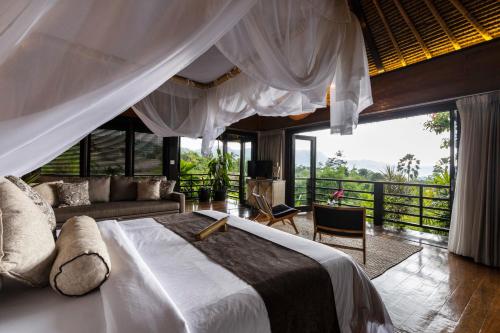
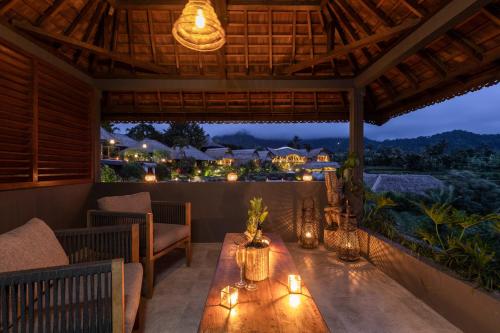
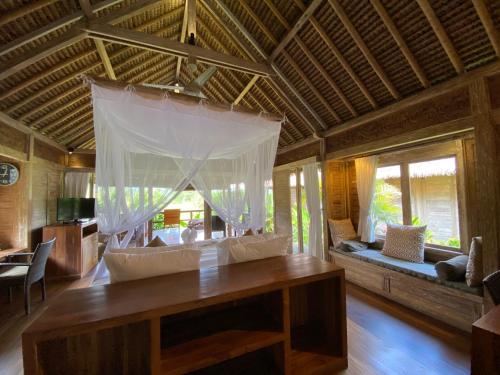

If you are looking to splurge, Wapa di Ume Sidemen is simply fantastic and is located on the same street as the other two accommodation options above:


Another great base in Bali is Ubud. It’s a bit further from Taman Ujung, but it’s well-located to visit several other fantastic attractions throughout Bali. All of the following are some of the best mid-range hotel accommodations located within walking distance from the city center:
Komaneka at Rasa Sayang Ubud Hotel



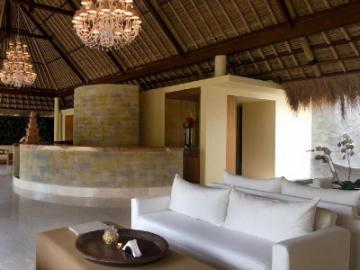

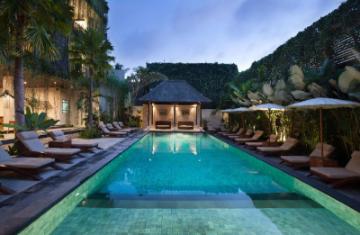

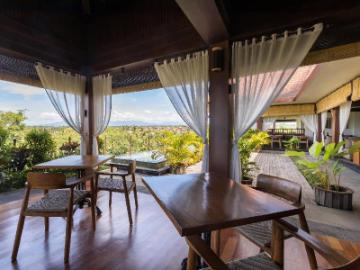


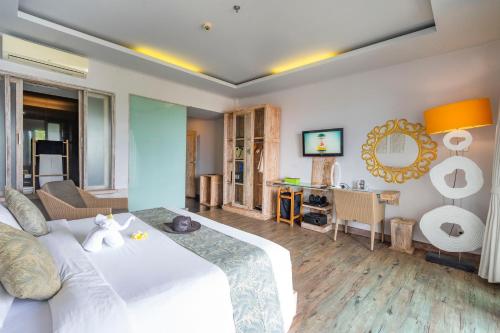





Planning a Trip to Bali?
You might be interested in these pages:
Best Things to See and Do in Ubud
Best Things to See and Do in Gili T
The Perfect Three-Week Bali Itinerary
Best Things to See and Do in East Bali
We also highly recommend these travel guidebooks:
Lonely Planet Bali, Lombok & Nusa Tenggara
Bali: The Solo Girl’s Travel Guide
Rough Guides: Bali and Lombok
Photography Gear
If you like our photography, you might be interested in some of the gear we use to shoot our travel and hiking destinations.
Camera Body – Nikon Z 6ii Fx-series Mirrorless Body
Main Lens – NIKON 24-120mm F/4G ED VR AF-S
Zoom Lens – Sigma 745-306 150-600mm f/5-6.3
Polarizing filters – Urth Circular Polarizing (CPL)
Camera Tripod – K&F Concept 64-inch Camera Tripod
Mini-tripod – Lammcou Flexible Camera Tripod
Camera/hiking backpack – Vanguard Alta Rise 48 Backpack
Universal Travel Adapter – VYLEE Universal International Power Travel Plug
Other Travel Essentials
Travel Insurance
SafetyWing is a travel insurance company that offers comprehensive coverage for travellers. Includes Medical Insurance and Travel Insurance. Primarily geared towards long-term travellers, digital nomads, and expats.
e-Sim cards
Airalo is the world’s first and largest eSIM store with eSIM plans for 200+ countries and regions worldwide. With Airalo eSIMs, travellers can get connected the moment they land at their destination and avoid nasty data roaming charges
eSIMS are a sustainable alternative to single-use SIM cards – they are 100% digital, require less energy to produce and be re-used rather than disposed of.
Car Rentals
Discover Cars is our go-to website for car rentals. We almost always find our preferred rate there.
Transfer from Airport
Welcome Pickups is our favourite private transfer service, which you can pre-book at a fixed price. Currently available in 220 cities all over the world (mostly in Europe, but with several major cities in Asia, the Middle East and the US).
Kiwitaxi is another private transfer service – we haven’t tried it yet, but it’s currently available in a few more countries (102 as of 2024).
Hotels and Accommodations (coming soon)
Photography Prints
If you found this blog useful, you can help support our blog by purchasing low-cost digital prints. Printed physical prints are also available for purchase.








—–
Well, that wraps it up! We hope you enjoyed our travel guide on Bali’s Taman Ujung Water Palace and that it will prove useful for planning your trip.
—–
You might also be interested in these related pages:





























